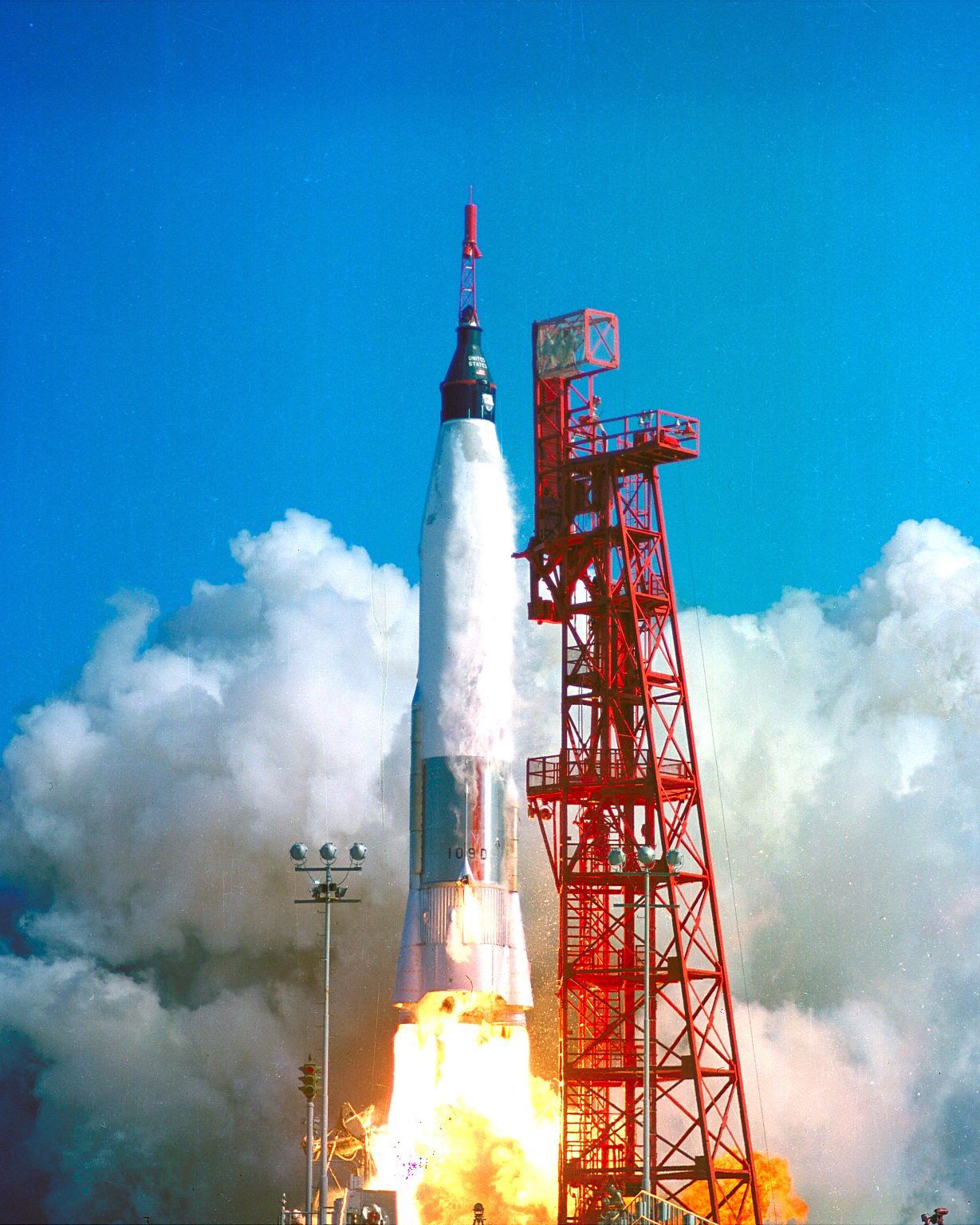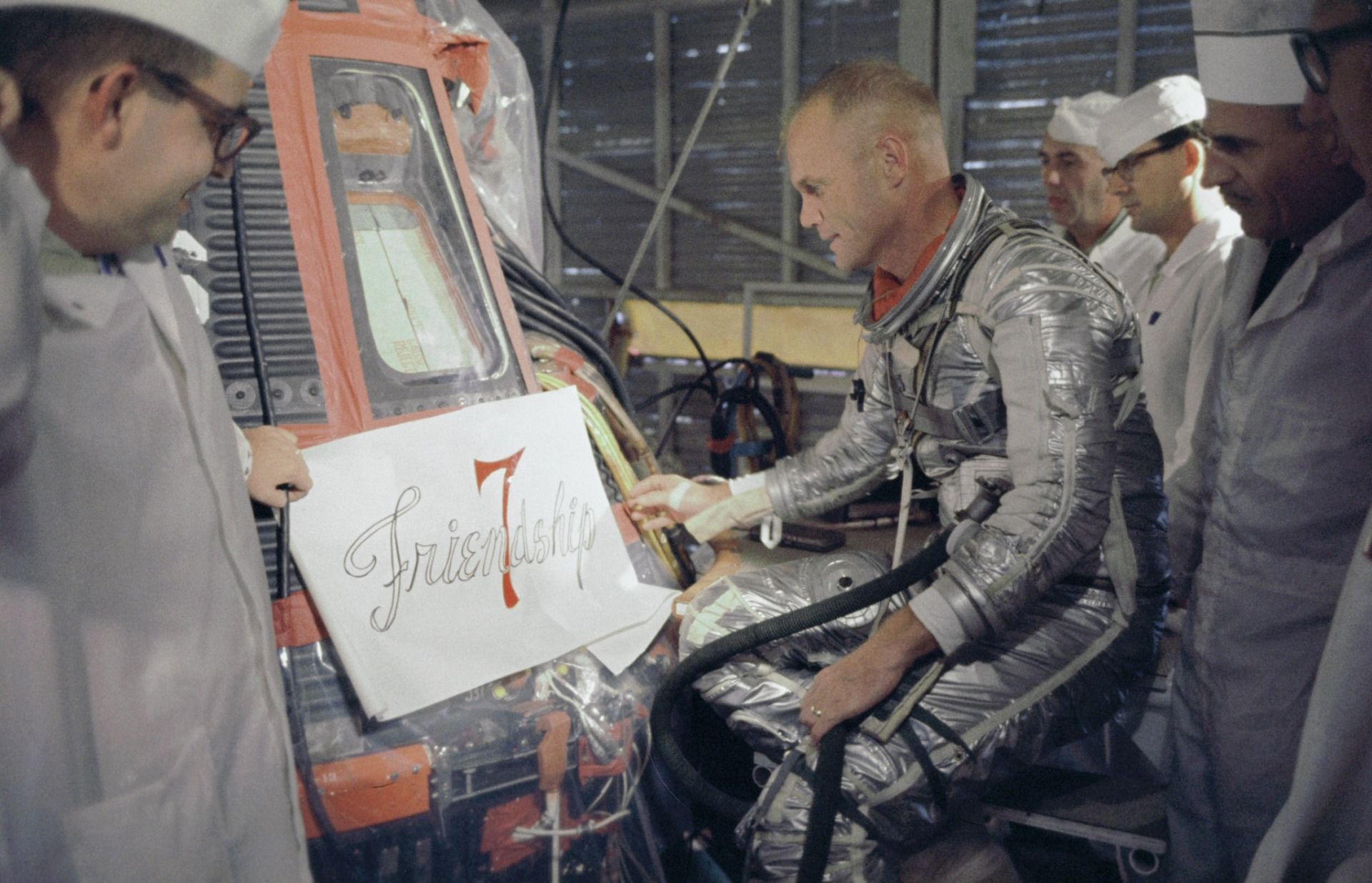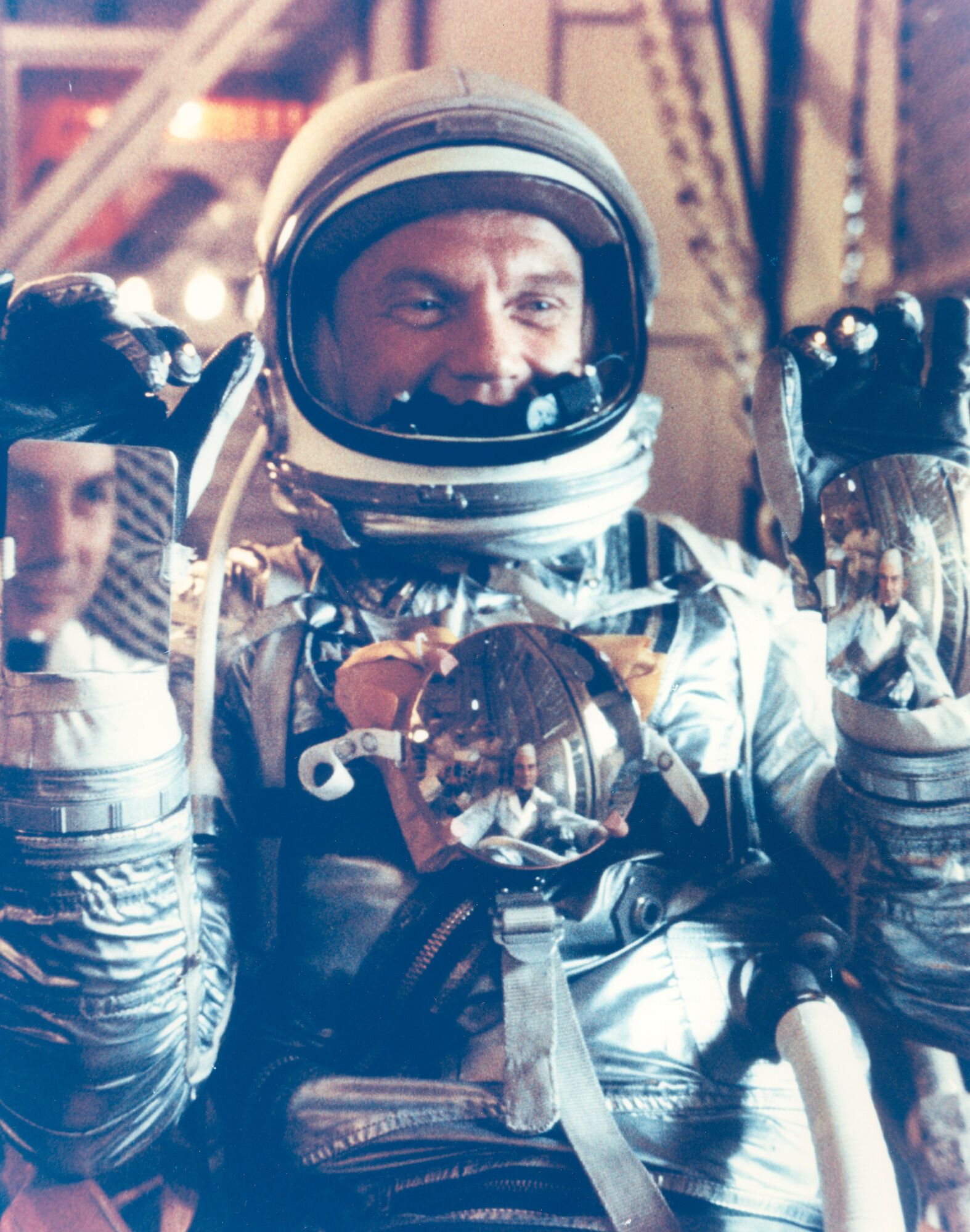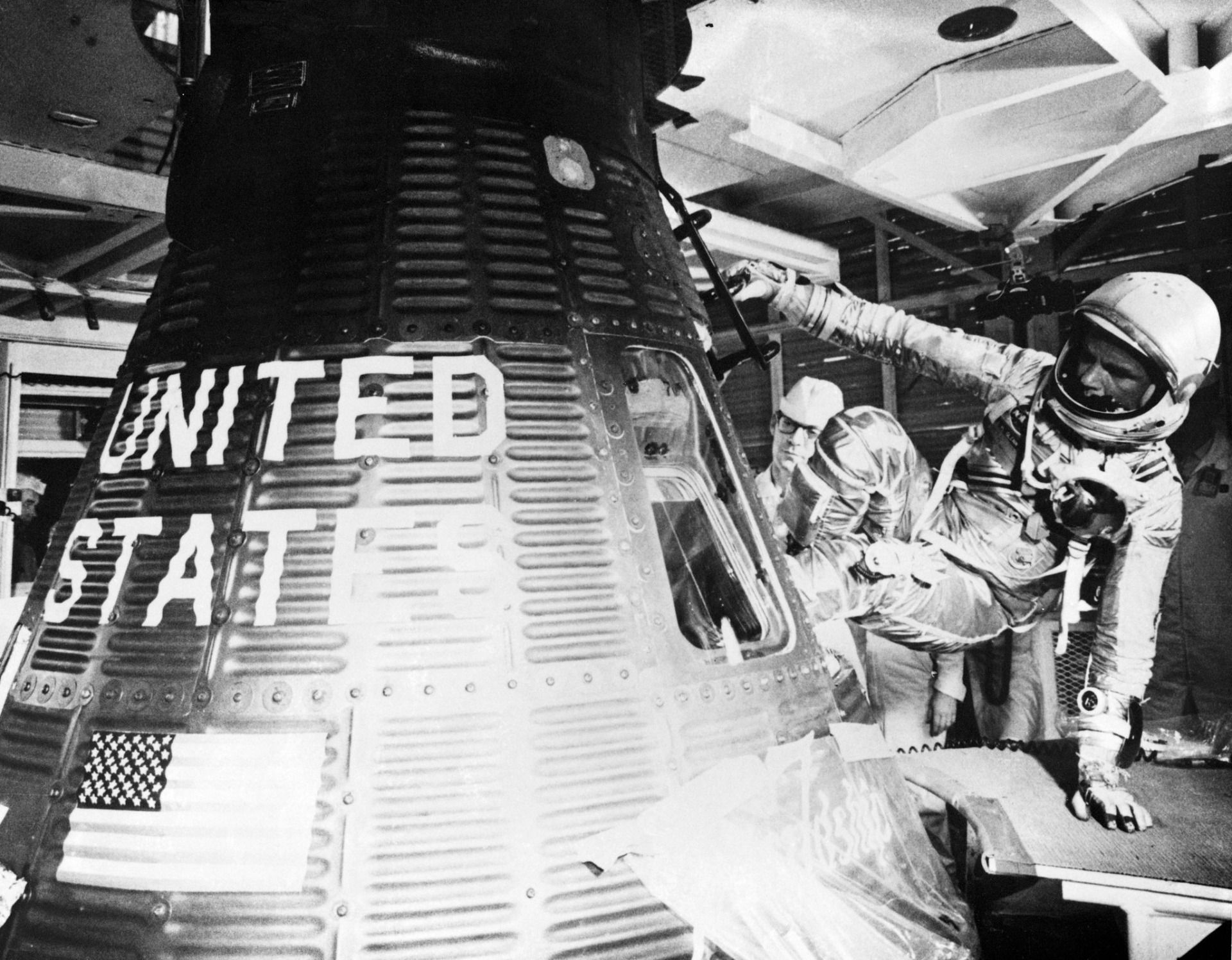
Mercury-Atlas 6

Mercury-Atlas 6 was the very first American orbital spaceflight, which took place on February 20, 1962. Astronaut John Glenn piloted Friendship 7 spacecraft, and NASA operated the mission as part of Project Mercury. It was the fifth ever human spaceflight.
Glenn boarded Friendship 7 on February 20, 1962, at 11:03 UTC, following a 90-minute delay due to the necessary replacement of a faulty component in the spacecraft's guidance system. The hatch was bolted in place just over an hour later, and the spacecraft was launched at 14:47 UTC after another two hours of holds. As the Atlas rocket and Friendship 7 reached maximum dynamic pressure, aka max Q, and Glenn reported, "It's a little bumpy about here." Soon after, the flight smoothed out, and two minutes and 14 seconds after launch, the booster engines cut off and dropped away. Then, right on schedule, at two minutes and twenty-four seconds, the escape tower was jettisoned. After, the Atlas rocket and the Friendship 7 spacecraft pitched over further, giving Glenn his first view of the horizon. He described the view as beautiful, looking eastward across the Atlantic. By 14:52 UTC, Friendship 7 was in orbit. Glenn received word that the Atlas rocket had boosted the MA-6 into a trajectory that would hold for at least seven orbits. However, computers at the Goddard Space Flight Center in Maryland indicated that the MA-6 orbital parameters appeared good enough for almost 100 orbits.

While transversing over the Indian Ocean, Glenn observed his first sunset from orbit. He reported the sky in space was very black with a thin band of blue along the horizon. Glenn also noted in his opinion the sun had set quickly, but not as fast as he had expected. There was a reduction in light intensity for five or six minutes, and brilliant orange and blue layers spread out on both sides of the sun, spreading gradually toward the horizon.

After this, Glenn had a short 45-minute "night" and prepared to view his first sunrise from orbit from the periscope. As the sun rose, he saw thousands of little sparkling specks floating outside the capsule. He was concerned and momentarily felt that the spacecraft was tumbling or that he was looking into a starfield. However, a good look out of the window corrected this, and he became sure the "fireflies" he saw were streaming past his spacecraft from ahead. They didn't seem to be coming from the spacecraft, and they quickly disappeared as Friendship 7 moved into direct sunlight. It was later found that this visual phenomenon was probably small ice crystals venting from onboard spacecraft systems.

Glenn's spacesuit temperature was too warm and had been steadily increasing since the second orbit's start. He tried to adjust the internal suit temperature as he crossed the Indian Ocean, but upon approaching Woomera, Australia, a warning light came on, signaling him of excess cabin humidity. Glenn had to balance his suit for the rest of the flight carefully. Another warning light came on while he was still over Australia, indicating that the automatic control system's fuel supply was just above half. Mercury Control then recommended Glenn let the spacecraft drift to conserve fuel. There were no problems for the remainder of the second orbit for Friendship 7. Glenn continued to manually control the spacecraft's attitude, not letting it drift too far out of alignment. However, in doing so, he consumed more fuel than the automatic system would have.

The spacecraft was after that experiencing peak re-entry heating, and Glenn reported he thought the retro pack had jettisoned when he saw chunks coming off and flying by the window. He feared the fragments he was seeing were disintegrated heat shield pieces. The chunks he saw were pieces of the retro package breaking up in the re-entry fireball. Friendship 7 began oscillating severely after passing the peak g region, and Glenn could not control the ship manually. The spacecraft was oscillating over 10 degrees on both sides of the vertical zero-degree point. Glenn later said he felt like a falling leaf during that event. He activated the auxiliary damping system, which helped stabilize the oscillation. However, fuel in the automatic tanks was getting low.

Friendship 7 splashed down 40 miles (64 km) short of the planned landing zone in the North Atlantic. Retrofire calculations had not taken spacecraft weight loss due to the use of onboard consumables into account. A destroyer from the US Navy, the USS Noa, had spotted the spacecraft when it was descending on its parachute and reached the Friendship 7 capsule 17 minutes after splashdown. Once the spacecraft was on deck, Glenn attempted to leave the spacecraft through the upper hatch, but it was too hot inside for him to reach it. Instead, Glenn decided to blow the side hatch; he told the ship's crew to stand clear, and he hit the hatch detonator plunger with the back of his hand. The detonator plunger recoiled and cut through his glove, and injured his knuckles. The hatch came off with a loud bang, and the first U.S Navy Seal, Harry Beal, pulled Glenn out of the spacecraft. A smiling Glenn exited Friendship 7, and his first words back on Earth were, "It was hot in there!"
During this mission, the achievements made set the tone for the future of space travel. Without the success of this first Mercury orbital spaceflight, the Gemini, Apollo, and Space Shuttle programs that followed may never have been possible.
